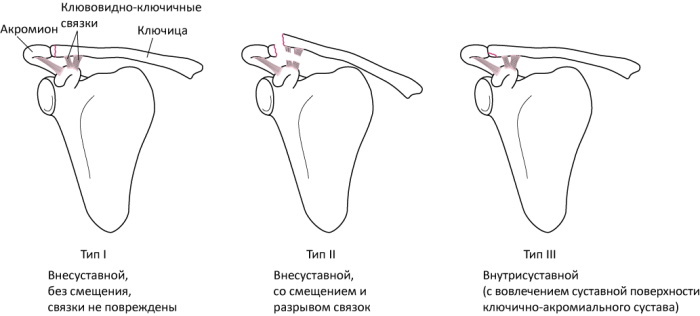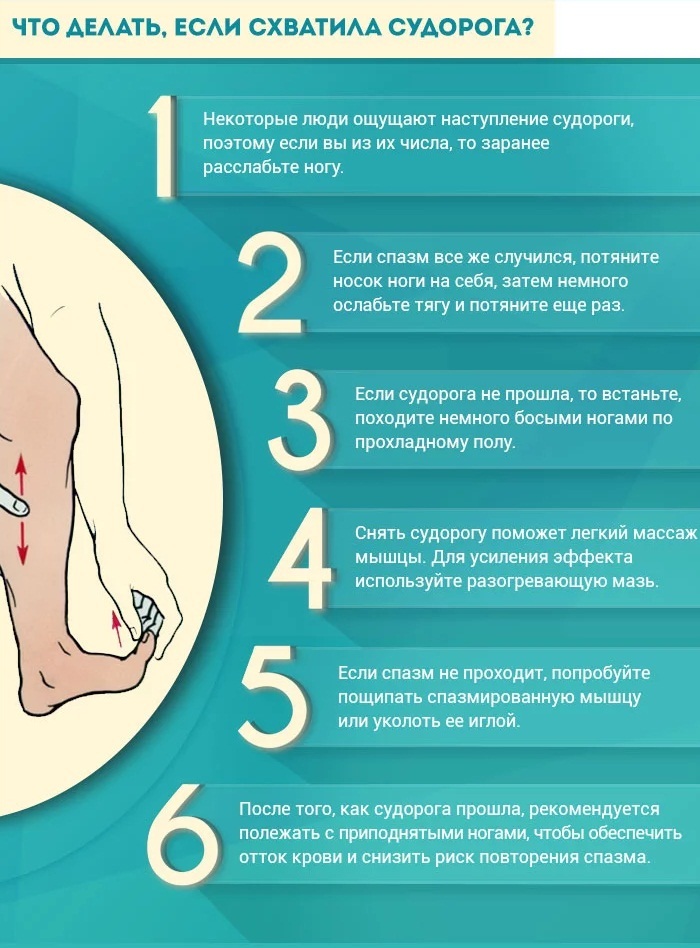The muscles of the arms include many different muscles that allow a person to perform different complex movements for a long time each day.
Schematic drawing of arm muscles allows you to assess the complexity of the structure of the system that provides mobility of the upper limbs. Damage or injury to even 1 muscle can disable the entire system and immobilize the hand for a long time.
Record content:
- 1 What are arm muscles
- 2 Functions
- 3 Structure
- 4 Types of diseases
- 5 When to see a doctor
- 6 Treatment methods
- 7 Possible complications
- 8 Arm Muscles Videos
What are arm muscles
The muscles of the arms are a collection of organs of the human or animal body, formed by the muscle tissue in the arm. The latter has the properties of elasticity and flexibility, the ability to decrease and increase under the influence of nerve impulses. Many homogeneous and differently sized muscles are connected into groups or independently perform their functions in the movement of the hand.
Due to the peculiarity of the structure of muscle tissue, under the influence of nerve impulses, the joints of the arm and hand are unbend, bend and unfold in different directions.
Individual muscle groups in the hand are responsible for maintaining the position of the hand in a neutral position. Any, even the smallest movement of the hand is the result of the work of several muscles, a disease or injury to one of which sharply reduces the mobility of the entire arm.
Functions
The muscles of the hands, the pattern of which is always divided into the back and front, are united by the tissues of the antagonists. Each muscle group in the arm has, in addition to the flexors, the extensors, which together provide each part of the arm with high mobility.
Each muscle group performs its function in the mobility of the hand:
- the biceps muscle of the shoulder, which is called the biceps, helps to flex at the elbow and unbend the arm, as well as rotate the hand;
- the ulnar muscle takes part in the extension of the forearm at the elbow;
- the coracohumeral muscle not only fixes the head of the joint in the corresponding glenoid cavity, but also helps to bend the arm in the shoulder;
- the brachialis or key muscle strengthens the biceps and is responsible in the forearm for flexing the arm;
- the triceps muscle of the shoulder makes it possible to unbend the arm at the elbow and bring it to the body, providing a starting position;
- the brachioradialis muscle participates in flexion and extension of the forearm at the elbow, and also keeps the forearm in a neutral position;
- round and square pronator help to rotate and hold the hand in the palm down position;
- the long and short extensor of the thumb, the extensors of the index and other fingers allow you to quickly unbend the hand and fingers and ensure its neutral state;
- the radial flexor of the wrist is responsible for flexion in the wrist joint and helps to deflect the hand to the side;
- superficial and deep flexors of the fingers when interacting with the long flexor of the thumb hands are involved in bending the fingers of the hand and allow you to hold the load in the hand for a long time time;
- instep support together with biceps allow you to turn your hand with your palm up;
- the regular and short wrist extensor provides wrist and elbow extension;
- the flexor of the wrist is involved in neutralizing and flexing the wrist, and also assists in flexing the elbow;
- the long palmar muscle carries the main function of flexing the arm in the wrist area;
- the long radial extensor of the wrist not only extends the wrist joint, but also participates in the abduction of the hand.
Precise and well-coordinated work of all muscle groups of the arm provides soft and even movements with both hands, the muscles of which are not interconnected. When injured, not only individual muscles can be affected, but also muscle groups. In this case, the functions of the muscles of the hand are distributed to healthy muscles, which are not always able to withstand an increased load.
Structure
The muscles of the hands, the diagram-drawing of which helps to clearly separate the muscles, are grouped into 3 joints:
- muscles of the hand;
- shoulder muscles;
- muscles of the forearm.
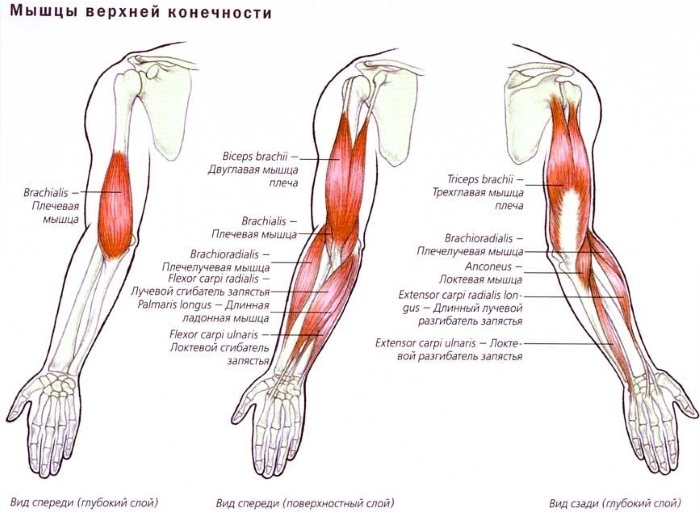
Human arm muscles. Diagram-drawing
The muscles of the shoulder include the biceps, triceps, brachialis and brachioradialis muscles:
- The biceps brachii has 2 heads, which are attached above the joint and at the coracoid process of the scapula. The muscle itself is located along the shoulder and is considered one of the main strength muscles of the arm.
- The brachialis muscle is located deep under the biceps and is anchored in the lower part of the humerus. It provides additional bicep function when flexing the elbow.
- The brachioradialis muscle is located along the entire forearm and is attached in the area of the radial joint of the hand. This muscle strengthens the entire arm and allows it to flex when exposed to increased weight.
- The triceps is located on the back of the arm along the forearm. The triceps muscle of the shoulder has 3 heads and is fixed in the area of the scapula and humerus. Most of all, the work of the triceps is felt when lifting and holding weights in straight arms.
The muscles of the forearm are divided into 3 subgroups. They combine the flexors and extensors of the forearm, as well as the muscles that provide mobility of the fingers.
- The long palmar muscle, the radial and ulnar flexor of the wrist, are responsible for flexion of the wrist joint. They allow you to bend the arm at different angles and different directions, and are involved in bending the fingers.
- The short, long radial and ulnar extensors of the wrist help to extend the arm in the wrist joint. Allow these muscle groups to abduct the hand and hold it in a neutral position.
- The instep support and pronator on the forearm provide rotation movements with the hands in different directions at any angle.
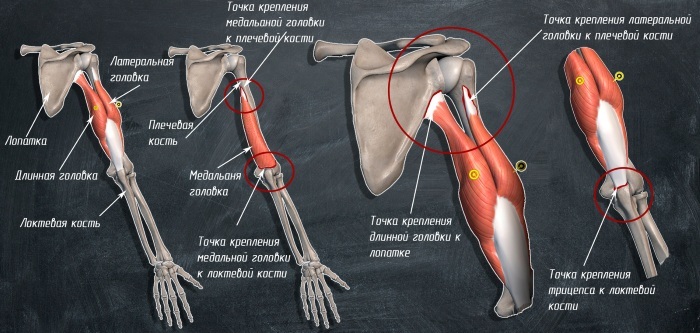
The hand muscles have attachments along the fingers and forearm.
- The fingers are flexed with the superficial and deep flexor of the fingers, the long flexor of the thumb.
- The long and short extensors of the thumb, extensors of the fingers and the extensor of the index finger, which help to facilitate holding the hand in a neutral position for a long time time.
Types of diseases
The muscles of the hands, the diagram-drawing of which helps to clearly determine the site of the lesion, can be susceptible to various diseases:
- Landouzy-Dejerine myodystraphia progressive dystrophy of the shoulder-shoulder joint is a hereditary disease, in which the muscles of the arm and shoulder girdle are characterized by severe weakness, there are cuts in the muscles of the shoulder and forearms.

The disease can manifest itself at an early age (from 3 years) or in the period from 12 to 40 years. In this case, the symptoms of the disease progresses rapidly. The disease is accompanied by a complex of symptoms and provokes scoliosis, pseudohypertrophy of individual muscles;
- obstetric paralysis occurs when newborns receive damage to the brachial plexus, which forms nerve roots during childbirth.
In this case, the muscles of the shoulder and forearm can be damaged, which is reflected in the immobility of the upper arms. Otherwise, the muscles in the hand, which are responsible for the mobility of the lower arms, can be impaired.
In rare cases, the disease is mixed. Such a disease, with timely diagnosis and treatment, is quickly cured with the help of drug treatment and physiotherapy;
- arm muscles are often exposed to myositis or skeletal muscle inflammation as a result of external influences;
There are several types of the disease:
- polymyositis, affects a muscle group of the arm;
- dermatomyositis is characterized by muscle and skin damage at the same time;
- neuromyositis is associated with muscle and nerve damage.
Myositis occurs not only as a result of injuries, but also due to:
- occupational hazard of labor;
- infections, including after the transferred flu, tonsillitis;
- hypothermia and autoimmune processes;
- exposure to toxins.
With myositis, individual muscles are completely or partially inflamed. In the place of muscle tissue damage, constant mild pain appears. Hand movements become limited. When performing certain movements, the pain syndrome may increase.
- in rare cases, as a result of injuries in the muscles, tears or strains appear, which completely immobilize the damaged part of the arm or make it inactive.
Most often, after increased physical exertion in training, muscle fibers cannot withstand and can come off or break, as well as stretch. With such injuries, a strong pain syndrome is observed in the hands, which is permanent. When probing at the site of injury, a visible depression appears, which turns red or blue;
- rheumatic diseases can be observed in the muscles of the hands, limiting their movement.

Migratory pains appear in the joints of the hand, they swell. The movements in the hands are reduced in amplitude, the hands are greatly weakened. Rheumatism often occurs after an infection or damage to the nervous tissue, in which gradual degenerative processes occur in the tissues of the hands;
- some diseases (epilepsy) and heavy loads provoke muscle cramps, which also limit the ability of the muscles in the arms.
At the time of seizures, the muscles in the hands begin to bend and unbend in an unnatural state for no reason. The transverse tissues in the hand harden, the blood supply to a number of areas is limited. Convulsions can last for a long time and completely paralyze a person.
| Arm muscle disease | Period of possible manifestation |
| Landouzy-Dejerine myodystrophy | in the period of 3-6 years. or 12-40 liters. |
| obstetric paralysis | at birth |
| myositis | from approximately 18 liters. |
| rheumatism | development from 25 liters is possible. |
| convulsions | from birth |
| breaks | from about 14 liters. |
When to see a doctor
The muscles of the hands, the diagram-drawing of which testifies to the increased complexity of the structure of the motor apparatus of the upper limbs, in the absence of serious problems and injuries, can recover on their own within a short time. In this case, no special treatment is required.
It is enough to remove the load on the hands, provide peace to the whole body and consume a sufficient amount of vitamins and minerals, which ensure rapid tissue regeneration.
However, there are cases when you need to immediately consult a doctor for qualified help.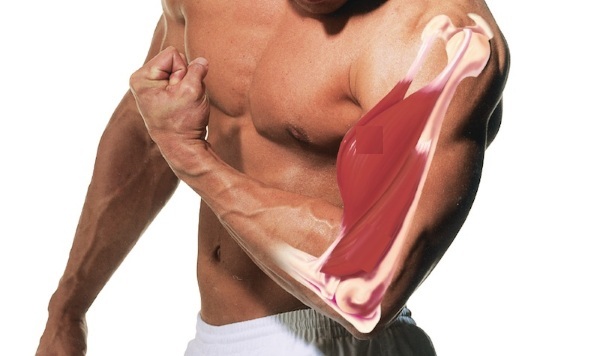
Such cases include appearing in the hands:
- severe muscle pain;
- complete or partial limitation in movement;
- bruising, redness and swelling of the skin;
- periodic seizures;
- severe weakness and constant minor pain for a long time, as well as pain when performing simple movements;
- swelling and seals in the muscles.
If you have 1 of the symptoms, you urgently need to contact an orthopedist or surgeon for examination and, if necessary, additional examination. In case of emergency, if the muscles of the arm are injured by a traumatologist, initial treatment may be prescribed.
Treatment methods
The arm muscles are treated depending on the type of cause and the extent of the muscle damage.
A spasm in the muscles of the arms is characterized by a sharp compression of certain muscle groups, which is accompanied by hardening of the transverse tissues, a local decrease in blood circulation and severe pain.
Treatment of seizures consists in performing drug treatment of the underlying disease (the cause of the seizures), which may be associated with disturbances in the work of the cardiovascular system, nervous disorders and malnutrition, and a number of relaxing procedures.
Cramps are best treated with warm baths with decoctions of chamomile, lavender, and string herbs.
- 4 tbsp. l. leaves and flowers of chamomile, lavender or a string are brewed with 500 ml of boiling water and insisted for half an hour.
- The mixture is filtered and added to the bath.
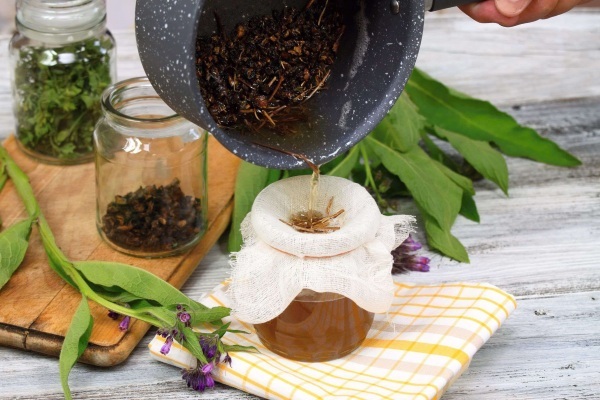
It is recommended to take a warm bath before going to bed for 30-40 minutes. After the bath, the skin must be rinsed with clean water.
Professional hand massage quickly reduces the number of cramps.
When performing the massage, the main muscles of the hand are relaxed and stretched, their blood supply and activation of internal processes occurs, which reduce the likelihood of convulsive manifestations.
In parallel, the patient is prescribed proper nutrition and compliance with the rest regimen during the day, a course of vitamins is prescribed.
Effectively increases the level of vitamins in the body.
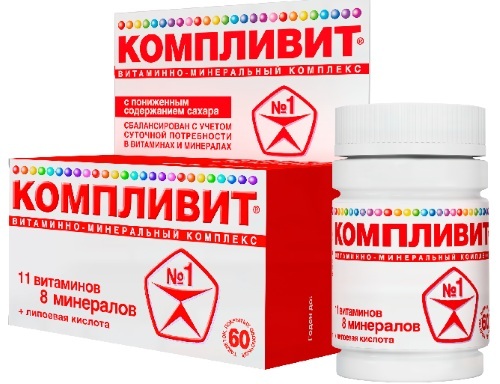
The preparation contains the vitamins and minerals essential for daily intake in 1 tablet. Already after 5-7 days after the start of the intake, the general well-being improves and the balance of trace elements is restored. The drug is taken 1 tablet a day for 30-60 days. The cost of packaging is 150 rubles.
The Alphabet is able to quickly saturate the body with all the necessary nutrients.
The drug is produced separately for children, women and men and contains different concentrations of vitamins, trace elements and acids required for each group of patients. Substances in the alphabet are grouped into 3 groups for better assimilation in the body. Thanks to the competent separation, all nutrients are assimilated within 40 minutes. after taking.
After 7-10 days after the start of the intake, the general state of health improves, the pain syndrome decreases, and active restoration of muscle tissue is observed. The cost of the medicine varies within 350 rubles. The course of admission is 20-30 days, depending on the patient's state of health.
The cause of rheumatism in muscles is often complex immunobiological reactions and neuro-dystrophic processes provoked by infection, hypothermia or allergies.
Severe pain syndromes with migratory joint pain lead to difficulty in movement and swelling. To restore muscle and blood vessels, a course of tablets and ointments is prescribed in it to relieve inflammation and restore tissue.
Ibuprofen has established itself as a simple and effective remedy for muscle pain, which can relieve inflammation, pain and actively promotes muscle tissue recovery.
The medicine is taken 1 tablet 3 times a day by adults for a course of 10-14 days. The cost of the drug is 100 rubles.
Ibuprofen gel actively relieves local inflammation when applied to the skin.
The components of the gel include substances that promote rapid healing. The gel is applied 3 times a day to the site of injury for 7-10 days. The cost of the medicine is 90 rubles.
Diclofenac for 1-2 weeks helps relieve pain and inflammation in the muscles and tissues of the arm.
The medicine perfectly relieves swelling and inflammation and promotes rapid tissue healing. The drug is taken 1 tablet 1-2 times a day for 10 days. The price of the drug is 150 rubles.
Diclofenac ointment has a concentrated composition and helps to relieve swelling and inflammation in the muscles of the hands.
The drug is applied to a sore spot and tied with an elastic bandage for 2 hours. The procedure is recommended to be carried out during the day in order to exclude clamping of blood vessels. The course of drug treatment is no more than 5-7 days. The cost of the medicine is 300 rubles.
Muscle tears require surgery. After the operation, the patient is shown complete rest and a course of multivitamins for quick recovery. After 30 days, the patient undergoes a course of physiotherapy in the form of therapeutic exercises and massages, which help to normalize the functioning of muscle tissue.
During the period of treatment, analgesic drugs are prescribed to the patient to relieve pain.
Nise has active antipyretic, analgesic and anti-inflammatory properties.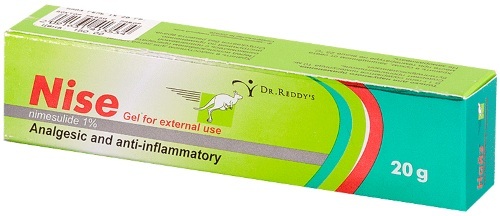
The drug is perfectly absorbed and within 20 minutes. is activated in the body. The action of the drug lasts for 8-10 hours. Nise is drunk as needed, but no more than 1 tablet 3-4 times a day. The course of treatment can be 10 days. The cost of the medicine is 200 rubles.
Ketarol is actively used for pain relief after operations on muscles and joints.
The drug takes 20-30 minutes. relieves pain and promotes tissue recovery and healing. Ketarol is taken 1 tablet 3 times a day for 3-5 days and then as needed. The cost of packaging is 150 rubles.
Muscular dystrophy is reduced due to the prescribed special diet with a large amount of trace elements and therapeutic exercises. The systematic implementation of special exercises strengthens the muscles of the arms and promotes their recovery.
Myositis of various origins, depending on the cause of the disease, are treated in the same way as rheumatism with a course of drugs that help relieve inflammation. In addition, in case of hormonal imbalance, patients are prescribed hormone therapy and physiotherapy exercises for 10 days.
To quickly restore the work of the muscles of the hands, it is important to follow a special diet. Simultaneously with the implementation of the drug course of treatment, patients are advised to consume foods with a large amount of calcium and potassium.
The diet includes foods containing glycogen and glucose, which are the basis for the structure of muscle tissue. Supplementing the diet with vitamins with a high content of trace elements helps to restore the mobility of the arm muscles in a short time.
Possible complications
In case of a disease, the muscles of the hands require competent determination of the site of injury according to the pattern-drawing and treatment to maintain the flexibility and mobility of the upper limbs. In a number of cases, the muscles of the arm are restored rather quickly if a special diet and rest regimen is observed.
In case of severe pain in the muscles, restrictions in movement, you should immediately consult a doctor for examination and drug treatment.
Ignoring pain, restrictions in movement and cramps in the muscles of the hands can further provoke a number of complications:
- tears in the muscles of the arms can completely immobilize the upper limb. To provoke necrotic processes at the site of injury, which can lead to renal failure and amputation of the limb or tissues;
- muscular dystrophy gradually causes complete atrophy of certain parts of the hands, immobilizing them;
- myositis, if untreated, can develop into chronic diseases of bones and adjacent tissues;
- Rheumatism and convulsions, in the absence of the necessary treatment measures, gradually transform into chronic forms, which can significantly reduce the mobility of the hands and their strength.
The drawing-diagram of the main muscles of the hands greatly facilitates the establishment of the causes and type of disease, which can develop in a short time.
A timely visit to a doctor and an examination helps to quickly diagnose the disease. Modern technologies and drugs contribute to the rapid removal of inflammation, healing and restoration of arm muscles and their mobility for a long time.
Arm Muscles Videos
Muscles of the forearm and hand:

